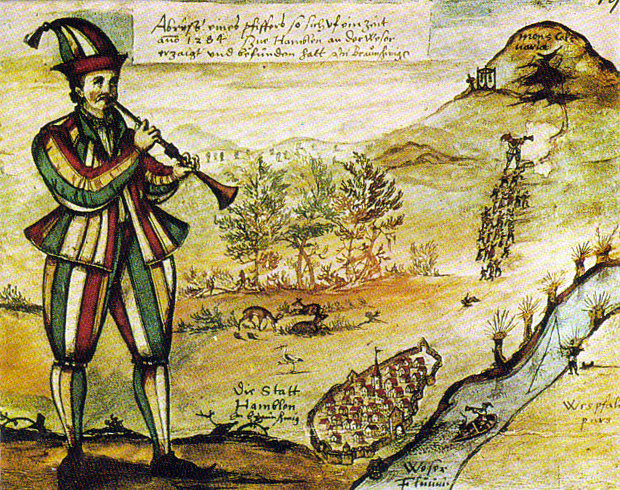
Word of the Day: Pied
Paul Schleifer
Pied is an adjective meaning “having patches of two or more colors, as various birds and other animals.”
According to etymonline.com, the adjective enters the language in the 14th century: “as if it were the past participle of a verb form of Middle English noun pie ‘magpie’ (see pie [n.2]), in reference to the bird’s black and white plumage. Earliest use is in reference to the pyed freres, an order of friars who wore black and white.
So, if we follow the trail to the n.2 under pie, we find this: “’magpie,’ mid-13c. (late 12c. as a surname), from Old French pie (13c.), from Latin pica ‘magpie’ (see magpie). In 16c., a wily pie was a ‘cunning person.’”
I am neither a birder nor a bird watcher (according to Jonathan Rosen of The New Yorker, there is a difference), so I had to look up magpie, and it turns out that several types of magpies populate our world, but they all have one thing in common—they are black and white. However, I have seen magpies, but only on television. “The magpies” is the nickname of the Newcastle United football club in England, currently sitting 15th in the Premier League, and their home kit is black and white stripes.
Pied, then, initially relates to a friar who wears black and white and looks like a magpie. But then the meaning generalizes to meaning anyone who wears a multicolored outfit or costume. And that takes us to what I usually think of first when I hear the word pied, and that is the German legend of the Pied Piper of Hamlin.
Hamelin (Hameln) is a town in Lower Saxony on the river Weser, in Germany. Today it has some 56,000 or so people, so one would be hard pressed to call it a village. But in the Middle Ages, it was just a village. The town chronicle for the year 1384 says, “It is 10 years since our children left” (Harty, Sheila, “The Pied Piper Revisited,” in Education in the Market Place, eds. David Bridges and Terence H. McLaughlin [London: Falmer, 1994): 89). No reason is given, so over the course of hundreds of years, theories have been offered.
The first mention of rats in Hameln comes in 1599, and the story continued to change. The Grimm’s version of the pied piper story is the one most of us are familiar with. The town of Hamlin is having a problem with rats, perhaps a plague of rats, one might say. Suddenly, “there stood a tall thin man dressed in brightly colored clothes, with a long feather in his hat, and waving a gold pipe at them” (https://www.wattpad.com/81958501-the-original-grimm-brother-fairy-tales-the-pied). In exchange for a promise of 1,000 florins, the piper agrees to rid the town of the rats, a task which he accomplishes with his pipe (the kind you play). The next day, he comes to the Mayor and the town council looking for his payment. The Mayor tells him that he can have 50 florins, and he should be thankful. The piper tells them all that they will regret breaking their promise, but they send him packing. The next morning, he lures all the children away from the town with his piping, leading them into a cave in the nearby mountain. When they are all inside but one, a rockslide covers the entrance to the cave, and the children are never seen again. The one little boy tells the town what has happened, and they all feel regret.
In Robert Browning’s poetic version, the little boy who doesn’t disappear is lame, which is why he could not keep up. He tells the town that the children went to a beautiful place. Also in Browning’s poem, the piper is described in this way: “And in did come the strangest figure! / His queer long coat from heel to head / Was half of yellow and half of red” (https://www.poets.org/poetsorg/poem/pied-piper-hamelin).
So pied refers to the colorful garments of the piper.
On the other hand, according to the Urban Dictionary, pied can mean ignoring someone who is trying to get your attention, or failing to give someone a high five when offered.
Perhaps this refers to the fact that the Mayor of Hameln ignored the piper, to whom he owed 1,000 florins. Who knows?
The image is the “oldest picture of the Pied Piper copied from the glass window of the Market Church in Hameln/Hamelin Germany (c.1300-1633),” created by Augustin von Moersperg (https://commons.wikimedia.org/wiki/File:Pied_piper.jpg).